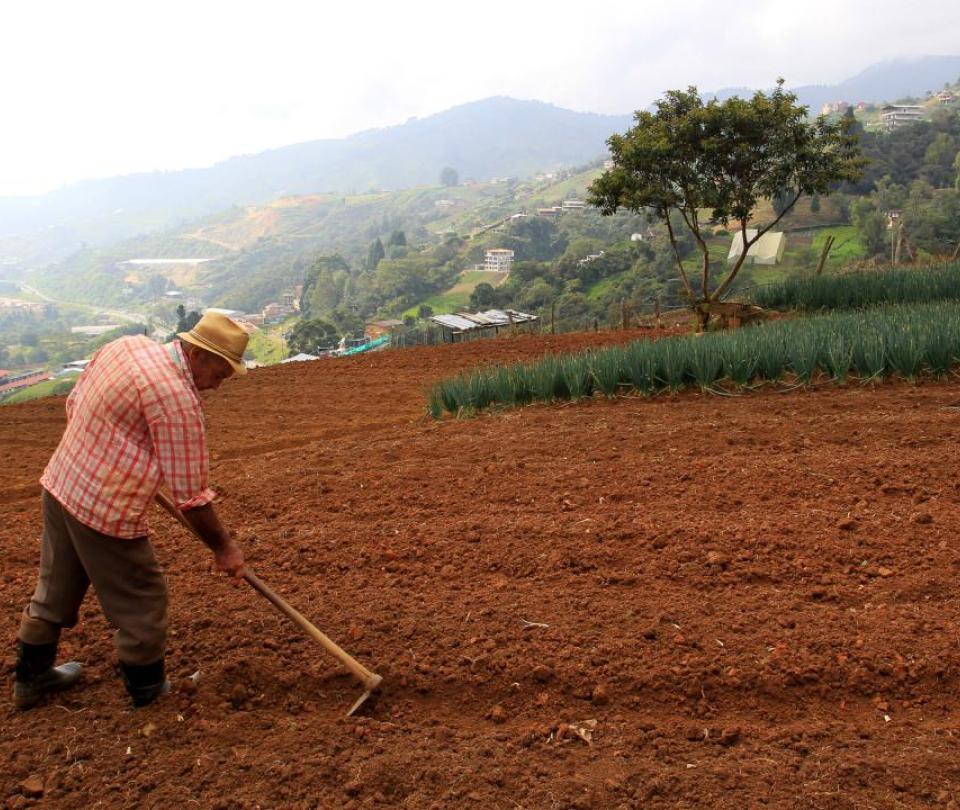The effects on agriculture continue to set trends due to La Nina phenomenon that lasted for several months in the country. The results in the different sectors and even the allocation of resources to deal with the damage show that the climatic event affected the sector at the end of 2022.
(See: Flower sector, the second largest exporter in agriculture, foresees challenges).
According to figures from Ministry of Agriculture and Rural Development, the portfolio led with a cutoff at December 31, 2022, the execution of $19,685 million to financially support agricultural producers affected by the loss of crops, herds and infrastructure “for the productive development of the field”.
However, the affectations came to touch items such as cocoa production in the country. According to Eduard Baquero López, executive president of the National Cocoa Federation (Fedecacao), the production of this crop fell 7,000 tons, which is equivalent to 10% of total production.
“Currently we are waiting and we have been working with the Ministry, it is the support for renewal of plantations, which involves a matter of inputs. We are waiting to define support this year for our producers”, said the manager to Portafolio.
However, cocoa has not been the only one affected, coffee also presented falls. Based on the latest press release from the National Federation of Coffee Growers (FNC), for January of this year, the grain registered a decline of 10%, going from 12.4 million bags harvested in the same period of 2022 to 11.1 million bags.
(See: Livestock in Colombia invests more in animal care).
According to the Federation, even though La Niña weather conditions have begun to improve, “have impacted the production in the long period of flowering and fruit formation”, they assure.
Looking towards him Hass avocado, It is important to highlight that even though the fruit was the protagonist in the Super Bowl with 1,472 tons sent to the United States for the event, the ravages of the weather reduced production in 2021 by 7.6%, when in 2021 hass exceeded the barrier of $200 million, with the shipment of 97,000 tons.
According to estimates made by Corpohass, the rains have generated a 30% to 50% decrease in fruit production. “The winter wave that worsened in 2022 greatly affects the Hass Avocado sector. The rains have caused a drop in the production of the fruit that we send to more than 30 destinations in the world”, said Jorge Enrique Restrepo, executive director of Corpohass.
On the other hand, this sector was added to the climate problem by the drop in the price of the fruit. According to the union, the values for Europe, which represent 76% of exports, were below the values for USA that register 22% of shipments.
Returning to the allocation of resources, the Ministry of Agriculture reported that of the almost $20,000 million, they were assigned to special lines of credit a total of $11,162 million between November and December to support 6,423 financing operations for those affected by the rains.
(See: The IDB recipe to achieve a productive transformation in the country).
In turn, the head of the portfolio, Cecilia López indicated that “The bulk of these resources were financial support because it was very important that farmers did not have economic limitations for the planting season.”.
Additionally, $3,803 million were allocated through the National Aquaculture and Fisheries Authority (Aunap), for fish stocking programs in artisanal perch river accounts.
The portfolio also reported that resources of $1,168 million were given to the ICA for the advancement of vaccination days. Just as $2,332 million were executed for the purchase of bovine food in Cordoba, Sucre, Bolivar and Cauca.
Some $220 million went to Upra for the georeferencing of affected producers.
(See: What percentage of CO2 emissions is caused by agriculture).
Falls in bovine production
According to José Félix Lafaurie, president of Fedegan, the last semester was not good because there was a high impact on the livestock sector, which is why they propose to the Ministry to review the issue of inflation. It should be noted that the bovine GDP closed in the last quarter of 2022 with a negative growth of 5.1%. In turn, Felipe Pinilla de Analac, indicated that in thehe milk sector, the weather and the increase in costs leave uncertain results.
DIANA K. RODRIGUEZ T.
Journalist Portfolio






![[Img #74675]](https://thelatestnews.world/wp-content/uploads/2024/12/They-discover-a-new-class-of-X-ray-sources-in-the-150x150.jpg)




